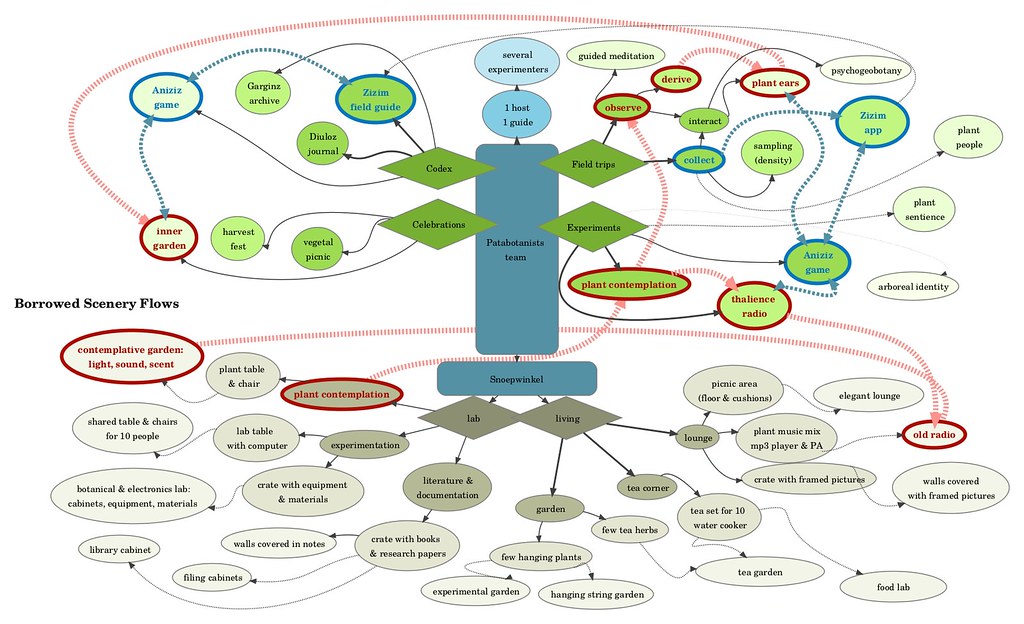Borrowed Scenery Diagram
Borrowed Scenery is a complex ecology of physical and online components, linked in an alternate reality narrative. During the design process, we wanted to keep track of how all the components fitted together, so we created a visual map or diagram, first on the blackboard then digitally.
The diagrams above and below are an overview of the design elements in Borrowed Scenery, ordered by:
Type of activity
The 'roots' of the tree are elements of the physical narrative and design of the space in the Snoepwinkel. The trunk represents the characters – ten fictional patabotanists and FoAM collaborators as their research assistants. The four branches depict the variety of activities that the patabotanists are undertaking to establish human-plant communication. These include experiments in the Snoepwinkel, fieldwork, an online 'codex' and a series of plant celebrations.
Minimum -> maximum
Elements that are closer to the 'trunk' are considered essential to the ARN – a bare minimum of things that are most feasible to make. Events and activities exfoliating farther out from the trunk get progressively more complex and are considered desirable but not absolutely necessary for the project to succeed.
Two critical paths
There are two 'paths' that are considered crucial for Borrowed Scenery: a contemplative and an active path. If both paths are fully implemented, the ARN should appeal to a wide range of visitors, from quiet meditators to active explorers. Elements that are on these paths (red and blue) are critical and need to be developed immediately. The other components are details that support and enrich these two experiences.

